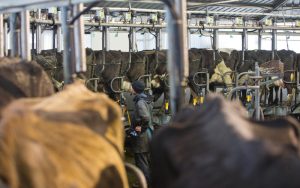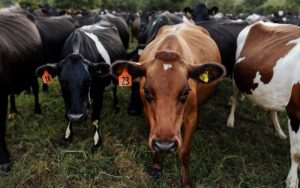
It’s the eighth season in a row full compliance has topped 90% in the district. The 93% result in 2021-22 follows a finding that all but two of the then 124 farms were fully compliant in 2020-21, a near-perfect result in 2019-20 and a 95 per cent compliance rate in 2018-19.
“They are very pleasing results,” said councillor Chris Hill, chairperson of the Tasman District Council regulatory committee, which received a staff report on the matter.
Farmers were clearly putting a lot of investment into infrastructure and a lot of work into “getting it right” to achieve such consistently high results.

“That’s a nod to them,” Hill said.
The staff report says all instances of non-compliance in 2021-22 were associated with the ponding of effluent. None were graded serious.
Six inspections found issues graded as “low risk non-compliance”. In all cases, the ponding measured between 2m² and 4m², and was “just deep enough to create splashback when stomped in”.
“This ponding did not present risk of runoff to surface water.”
Two inspections found issues graded as “moderate risk non-compliance”. Ponding on these two farms measured between 12m² and 15m² with a maximum depth of 5cm to 10cm.
“In neither circumstance was this ponding in danger of runoff to surface water,” the report says. “All farmers, and where applicable their staff, received on-farm education regarding ponding and how to avoid and mitigate it.”

Frequent spot checks were then undertaken on all non-compliant farms for the rest of the season and full compliance was always observed.
In addition, one farm received a formal letter of direction, related to ponding that was graded as moderate risk. Although the actual environmental outcome was minor and there was no immediate danger of the ponding running overland and entering water, a rain event was forecast for later that week.
News of the 2021-22 high compliance rate comes as the face of dairy farming continues to change in Tasman district. When the first full dairy effluent compliance survey was competed in 2005-06, there were 155 farms across the district. By the 2021-22 milking season, that number had fallen to 121.
“The initial decline from 2005 to 2013 was largely attributed to the amalgamation of small farms into bigger entities,” the staff report says. “However, the drop in farm numbers seen in recent times is associated with smaller farms ceasing supply as they become less economic and farms moving entirely away from dairying to dairy support, beef and more recently converting to hops.”
Along with fewer farms, the herd total across the district had also dropped from a peak of 58,179 cows milked in 2014-15 to 42,737 in 2021-22.
Another pattern of change was more farmers moving to full season once-a-day milking as opposed to the traditional twice-a-day regime. In the 2021-22 season, 40 farms practised full season once-a-day milking – an increase of seven from the previous season. However, for some it was not by choice but due to a wet and cold spring making grass growth slow coupled with a shortage of supplementary feed suitable for early lactation.
“Of the seven farms who continued [once a day] for the rest of the 2021-22 season, two farms look to stay on a [full season once-a-day] regime going forward,” the report says.

























